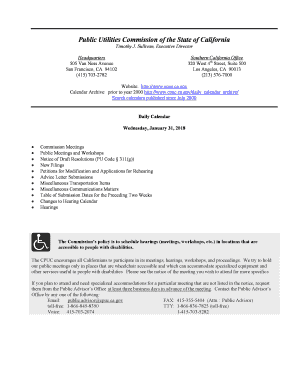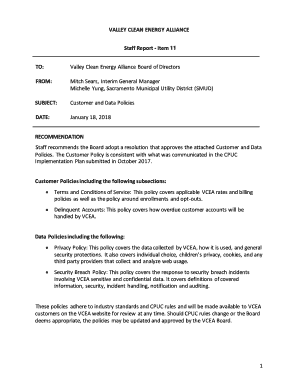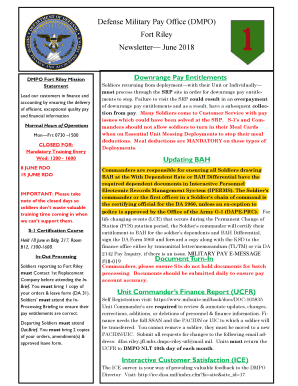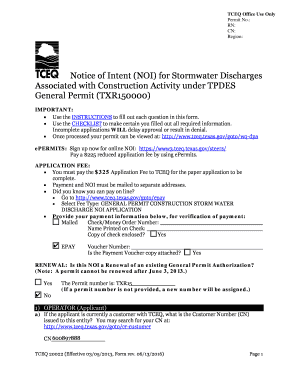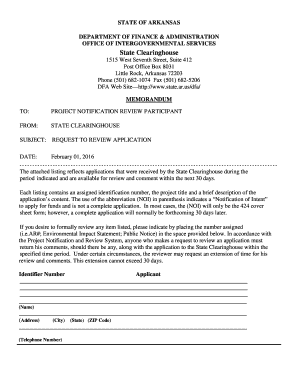
Get the free spreadsheet form fillable
Show details
Employee Time card
Employee Name:Email:Year to date totals:Manager:Phone:Regular hrs:January, February, MarchEmployee Time card: Daily, Weekly, Monthly, YearlyJanuary0.00Overtime hrs: 0.00Total: 0.00Week
We are not affiliated with any brand or entity on this form
Get, Create, Make and Sign

Edit your spreadsheet form form online
Type text, complete fillable fields, insert images, highlight or blackout data for discretion, add comments, and more.

Add your legally-binding signature
Draw or type your signature, upload a signature image, or capture it with your digital camera.

Share your form instantly
Email, fax, or share your spreadsheet form form via URL. You can also download, print, or export forms to your preferred cloud storage service.
How to edit spreadsheet form fillable online
Here are the steps you need to follow to get started with our professional PDF editor:
1
Log in to account. Click Start Free Trial and sign up a profile if you don't have one yet.
2
Upload a file. Select Add New on your Dashboard and upload a file from your device or import it from the cloud, online, or internal mail. Then click Edit.
3
Edit form templates editable. Add and replace text, insert new objects, rearrange pages, add watermarks and page numbers, and more. Click Done when you are finished editing and go to the Documents tab to merge, split, lock or unlock the file.
4
Save your file. Select it in the list of your records. Then, move the cursor to the right toolbar and choose one of the available exporting methods: save it in multiple formats, download it as a PDF, send it by email, or store it in the cloud.
Dealing with documents is simple using pdfFiller. Try it right now!
How to fill out spreadsheet form

How to fill out a spreadsheet form:
01
Open the spreadsheet form on your computer or device.
02
Start by entering your personal information in the designated fields, such as your name, address, and contact details.
03
If the form requires specific data, such as dates or numbers, ensure you enter the information accurately and in the required format.
04
Pay attention to any drop-down menus or checkboxes on the form and select the appropriate options that apply to you.
05
Read any instructions or guidelines provided and follow them while filling out the form.
06
Double-check your entries to ensure they are error-free before submitting the form.
07
If there are any additional sections or pages to the form, navigate through them and complete the necessary fields accordingly.
08
Once you have filled out all the required information, review the form one final time to make sure everything is complete and accurate.
09
Click on the submit button to officially submit the form.
Who needs a spreadsheet form:
01
Individuals who need to organize and track data efficiently, such as personal expenses or workout logs, may find a spreadsheet form useful.
02
Small businesses or startups that require a simple and customizable tool to manage their finances, inventory, or client information can benefit from using spreadsheet forms.
03
Educational institutions or research organizations that collect and analyze data can make use of spreadsheet forms to streamline data collection processes.
04
Event organizers who need to gather participant information or survey responses can utilize spreadsheet forms to conveniently capture and manage data.
05
Project managers or teams working collaboratively can use spreadsheet forms to collect and share information easily.
06
Organizations conducting surveys, feedback forms, or registration processes can employ spreadsheet forms to gather and evaluate data effectively.
Fill spreadsheet excel create editable : Try Risk Free
For pdfFiller’s FAQs
Below is a list of the most common customer questions. If you can’t find an answer to your question, please don’t hesitate to reach out to us.
What is spreadsheet form?
A spreadsheet form is a type of document used for organizing and analyzing data in a tabular format. It is typically created using spreadsheet software like Microsoft Excel or Google Sheets. The form consists of rows and columns that intersect to form cells where data can be entered.
Spreadsheet forms allow users to input and manipulate data, perform calculations, create formulas, and generate charts and graphs. They are commonly used in various contexts such as budgeting, financial analysis, project management, data tracking, inventory management, and creating reports.
Spreadsheet forms offer a structured way to display information, making it easier to analyze and understand data trends. They also provide functionalities like sorting and filtering, which help users organize and present data in a logical and meaningful way.
Who is required to file spreadsheet form?
The question is a bit unclear, but assuming you are asking about which individuals or entities are required to file a spreadsheet form, it can vary depending on the specific context. Generally, spreadsheet forms are used to organize and store data, calculations, or information, and they can be used by individuals, businesses, organizations, or government entities for various purposes.
For example, individuals may use spreadsheet forms to track personal expenses or income, create a budget, or analyze data. Businesses and organizations may use spreadsheet forms for financial reporting, inventory management, data analysis, project management, or other operational purposes. Government entities may use spreadsheet forms for financial reporting, statistical data analysis, or public recordkeeping.
So, the requirement to file a spreadsheet form would depend on the specific legal or regulatory obligations imposed on the individual or entity in question, as well as the purpose for which the spreadsheet form is being used.
How to fill out spreadsheet form?
To fill out a spreadsheet form, you can follow these steps:
1. Open the spreadsheet form in a software program like Microsoft Excel or Google Sheets.
2. Look for the form fields or cells where you need to enter information. These fields might be labeled with headings or have instructions provided.
3. Click on the first empty field or cell where you want to enter data.
4. Start entering the requested information or data into the appropriate fields or cells. You can use your keyboard to type in the data.
5. Move to the next field or cell by using the arrow keys on your keyboard or by clicking directly on it.
6. Continue filling out the form by entering the necessary information in each field or cell that requires input. Make sure to follow any specific formatting instructions, such as date or currency formatting.
7. Double-check your entries to ensure accuracy and completeness.
8. Once you have finished entering all the required information, click on the "Save" or "Submit" button, if available, to save your changes.
9. If you are using a web-based spreadsheet program like Google Sheets, your changes may be automatically saved as you fill out the form.
Remember to save a copy of the filled-out spreadsheet form for your records, if necessary.
What is the purpose of spreadsheet form?
The purpose of a spreadsheet form is to collect and organize data in a structured and systematic manner. It allows users to enter data into pre-defined fields and cells, ensuring consistent formatting and organizing the information in a logical manner.
Spreadsheet forms are commonly used for various purposes, including surveys, data collection, expense tracking, inventory management, and customer feedback. They make it easier to store, sort, filter, and analyze data, as well as generate reports and visualizations based on the collected information.
By using forms in spreadsheets, users can standardize data entry, reduce errors, and improve data accuracy and efficiency. Additionally, spreadsheet forms can be shared with multiple users simultaneously, allowing for collaborative data collection and updating.
What information must be reported on spreadsheet form?
The information that must be reported on a spreadsheet form can vary depending on the specific purpose or context of the spreadsheet. However, generally, the following information is commonly reported on spreadsheet forms:
1. Title or heading: A clear and concise title or heading that describes the purpose or content of the spreadsheet.
2. Date: The date when the information was recorded or when the spreadsheet was created.
3. Column headings: Clear labels or names for each column that represent the type or category of data being recorded.
4. Row headings: Labels or names for each row, often used to identify specific entities or categories related to the data.
5. Data entries: The actual data or information recorded in each cell of the spreadsheet, typically organized in rows and columns.
6. Totals, calculations, or formulas: If applicable, any numerical calculations or formulas used to derive values or totals based on the data entries.
7. Notes or comments: Additional notes, explanations, or comments that provide context or additional details related to the data.
8. Source or references: Information about the source or references used to compile the data, if relevant.
9. Summary or conclusion: A summary or conclusion section that highlights the key findings or insights derived from the data presented in the spreadsheet.
10. Contact information: Contact details of the person or organization responsible for the spreadsheet.
It's important to consider the specific requirements or guidelines provided by the organization or individual requesting the spreadsheet form to ensure that all necessary information is included.
What is the penalty for the late filing of spreadsheet form?
The penalties for late filing of a spreadsheet form can vary depending on the specific jurisdiction and circumstances. In general, late filing penalties can include fines, interest charges, or even legal action. These penalties are typically enforced to ensure compliance with regulations and encourage timely filing. It is advisable to review the laws and regulations in your specific jurisdiction to determine the exact penalties for late filing of a spreadsheet form.
How can I send spreadsheet form fillable to be eSigned by others?
Once your form templates editable is complete, you can securely share it with recipients and gather eSignatures with pdfFiller in just a few clicks. You may transmit a PDF by email, text message, fax, USPS mail, or online notarization directly from your account. Make an account right now and give it a go.
How do I edit form templates template in Chrome?
Download and install the pdfFiller Google Chrome Extension to your browser to edit, fill out, and eSign your form templates fillable, which you can open in the editor with a single click from a Google search page. Fillable documents may be executed from any internet-connected device without leaving Chrome.
How do I fill out spreadsheet form fill fillable on an Android device?
On an Android device, use the pdfFiller mobile app to finish your form templates fill fillable. The program allows you to execute all necessary document management operations, such as adding, editing, and removing text, signing, annotating, and more. You only need a smartphone and an internet connection.
Fill out your spreadsheet form online with pdfFiller!
pdfFiller is an end-to-end solution for managing, creating, and editing documents and forms in the cloud. Save time and hassle by preparing your tax forms online.

Form Templates Template is not the form you're looking for?Search for another form here.
Keywords relevant to spreadsheet excel online file form
Related to spreadsheet excel online document
If you believe that this page should be taken down, please follow our DMCA take down process
here
.















